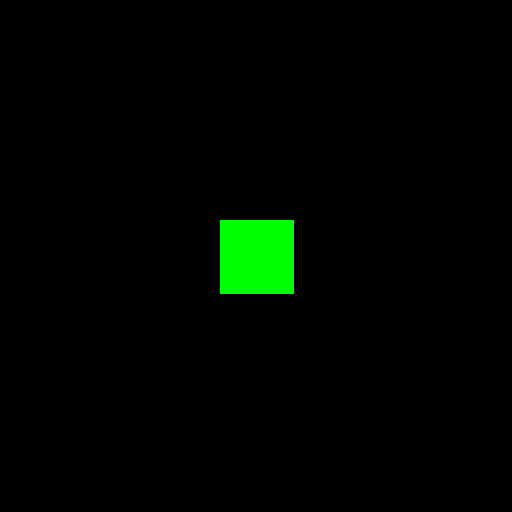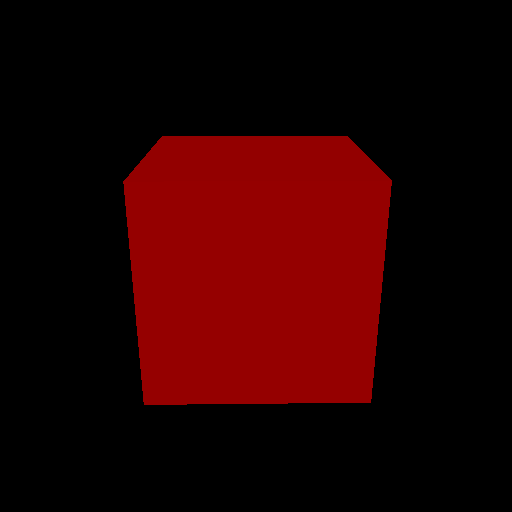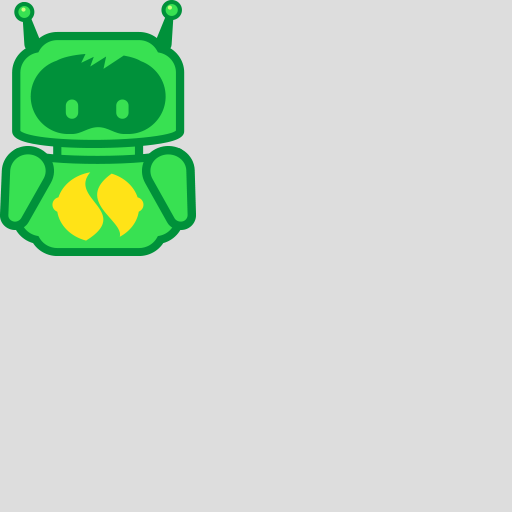Integration of node-canvas and headless-gl.
You will need to install some system packages in order to compile the required dependencies. Take a look here:
https://www.npmjs.com/package/gl#user-content-system-dependencies
On headless systems, you'll also have to make sure to install Xvfb and to have it running in the background.
You can use this systemd service to make sure Xvfb is always running:
[Unit]
Description=X Virtual Frame Buffer Service
After=network.target
[Service]
ExecStart=/usr/bin/Xvfb :99 -screen 0 1024x768x24
[Install]
WantedBy=multi-user.target
const fs = require('fs');
const THREE = require('three');
const GIFEncoder = require('gifencoder');
const {createCanvas} = require('../lib');
const width = 512,
height = 512;
const scene = new THREE.Scene();
const camera = new THREE.PerspectiveCamera(75, width / height, 0.1, 1000);
const canvas = createCanvas(width, height);
const renderer = new THREE.WebGLRenderer({
canvas,
});
const geometry = new THREE.BoxGeometry(1, 1, 1);
const material = new THREE.MeshBasicMaterial({color: 0x00ff00});
const cube = new THREE.Mesh(geometry, material);
scene.add(cube);
camera.position.z = 5;
const encoder = new GIFEncoder(width, height);
encoder.createReadStream().pipe(fs.createWriteStream('./snapshot/threejs-cube.gif'));
encoder.start();
encoder.setRepeat(0); // 0 for repeat, -1 for no-repeat
encoder.setDelay(16); // frame delay in ms
encoder.setQuality(10); // image quality. 10 is default.
let idx = 0;
function update() {
cube.rotation.x += 0.01;
cube.rotation.y += 0.01;
renderer.render(scene, camera);
if(idx > 0) {
encoder.addFrame(canvas.__ctx__);
console.log(`add frame ${idx}`);
}
idx++;
if(idx < 500) {
setTimeout(update, 16);
}
}
update();const fs = require('fs');
const GIFEncoder = require('gifencoder');
const clay = require('claygl');
const {createCanvas} = require('../lib');
const width = 512,
height = 512;
const canvas = createCanvas(width, height);
const encoder = new GIFEncoder(width, height);
let idx = 0;
// polyfill
global.document = {
createElement() {
return createCanvas(300, 150);
},
};
clay.application.create(canvas, {
width,
height,
init(app) {
// Create camera
this._camera = app.createCamera([0, 2, 5], [0, 0, 0]);
// Create a RED cube
this._cube = app.createCube({
color: [1, 0, 0],
});
// Create light
this._mainLight = app.createDirectionalLight([-1, -1, -1]);
// app.createAmbientLight('#fff', 1.0);
encoder.createReadStream().pipe(fs.createWriteStream('./snapshot/claygl-cube.gif'));
encoder.start();
encoder.setRepeat(0); // 0 for repeat, -1 for no-repeat
encoder.setDelay(16); // frame delay in ms
encoder.setQuality(10); // image quality. 10 is default.
},
loop(app) {
this._cube.rotation.rotateY(16 / 1000);
if(idx > 0) {
encoder.addFrame(canvas.__ctx__);
console.log(`add frame ${idx}`);
}
idx++;
if(idx > 197) {
process.exit(-1);
}
},
});const fs = require('fs');
const BABYLON = require('babylonjs');
const {createCanvas} = require('../lib');
// polyfill
global.HTMLElement = function () {};
global.window = {
setTimeout,
addEventListener() {},
};
global.navigator = {};
global.document = {
createElement() {
return createCanvas(300, 150);
},
addEventListener() {},
};
// Get the canvas DOM element
const canvas = createCanvas(512, 512);
// Load the 3D engine
const engine = new BABYLON.Engine(canvas, true, {preserveDrawingBuffer: true, stencil: true});
// CreateScene function that creates and return the scene
const createScene = function () {
// Create a basic BJS Scene object
const scene = new BABYLON.Scene(engine);
// Create a FreeCamera, and set its position to {x: 0, y: 5, z: -10}
const camera = new BABYLON.FreeCamera('camera1', new BABYLON.Vector3(0, 5, -10), scene);
// Target the camera to scene origin
camera.setTarget(BABYLON.Vector3.Zero());
// Attach the camera to the canvas
camera.attachControl(canvas, false);
// Create a basic light, aiming 0, 1, 0 - meaning, to the sky
const light = new BABYLON.HemisphericLight('light1', new BABYLON.Vector3(0, 1, 0), scene);
// Create a built-in "sphere" shape; its constructor takes 6 params: name, segment, diameter, scene, updatable, sideOrientation
const sphere = BABYLON.Mesh.CreateSphere('sphere1', 16, 2, scene, false, BABYLON.Mesh.FRONTSIDE);
// Move the sphere upward 1/2 of its height
sphere.position.y = 1;
// Create a built-in "ground" shape; its constructor takes 6 params : name, width, height, subdivision, scene, updatable
const ground = BABYLON.Mesh.CreateGround('ground1', 6, 6, 2, scene, false);
// Return the created scene
return scene;
};
// call the createScene function
const scene = createScene();
scene.render();
fs.writeFileSync('./snapshot/snap-babylon.png', canvas.toBuffer());const fs = require('fs');
const {Renderer, Figure2D, Mesh2D} = require('@mesh.js/core');
const {createCanvas, loadImage} = require('../lib');
const width = 512,
height = 512;
const canvas = createCanvas(width, height);
const renderer = new Renderer(canvas, {contextType: 'webgl'});
const f = new Figure2D();
f.rect(0, 0, 512, 512);
const m = new Mesh2D(f, canvas);
m.setFill({color: '#ddd'});
const url = 'https://p0.ssl.qhimg.com/t01a72262146b87165f.png';
loadImage(url).then((image) => {
const texture = renderer.createTexture(image);
m.setTexture(texture);
renderer.drawMeshes([m]);
fs.writeFileSync('./snapshot/snap-spritejs.png', canvas.toBuffer());
});You can use canvas2d and webgl as running in web browsers.
const fs = require('fs');
const {Renderer, Figure2D, Mesh2D} = require('@mesh.js/core');
require('jsdom-global')();
const {mockDOM} = require('../lib');
mockDOM(window);
const canvas = document.createElement('canvas');
canvas.width = 512;
canvas.height = 512;
const renderer = new Renderer(canvas, {contextType: 'webgl'});
const f = new Figure2D();
f.rect(0, 0, 512, 512);
const m = new Mesh2D(f, canvas);
m.setFill({color: '#ddd'});
const url = 'https://p0.ssl.qhimg.com/t01a72262146b87165f.png';
renderer.loadTexture(url).then((texture) => {
m.setTexture(texture);
renderer.drawMeshes([m]);
fs.writeFileSync('./snapshot/snap-meshjs2.png', canvas.toBuffer());
});


